-
 Insect screen is a fabric with very fine mesh, usually made of high-density polyethylene. It is made by drawing polyethylene into fibers and weaving or knitting them together. They are usually classified according to their mesh size. Commonly used mesh sizes are expressed in terms of the number of holes in one inch of width. Commonly used mesh sizes include 16 mesh, 20 mesh, 30 mesh, and 50 mesh. In today’s article, we’ll take you through a guide to the applications and sizes of insect screens.Read more
Insect screen is a fabric with very fine mesh, usually made of high-density polyethylene. It is made by drawing polyethylene into fibers and weaving or knitting them together. They are usually classified according to their mesh size. Commonly used mesh sizes are expressed in terms of the number of holes in one inch of width. Commonly used mesh sizes include 16 mesh, 20 mesh, 30 mesh, and 50 mesh. In today’s article, we’ll take you through a guide to the applications and sizes of insect screens.Read more -
 An anti-insect net is a light mesh netting used for blocking different kinds of insects. It is made from a plain-woven or knitted polyethylene netting. it is forming an effective barrier when installed.Read more
An anti-insect net is a light mesh netting used for blocking different kinds of insects. It is made from a plain-woven or knitted polyethylene netting. it is forming an effective barrier when installed.Read more -
 In today’s environmentally-conscious environment, there is a growing awareness of the severe damage caused by toxic pesticides to the environment and to public health. In fact, many consumers are no longer prepared to put pesticide-treated agricultural produce on their tables, and this trend of reduced used of toxic materials will grow together with the legislation of environment protection laws.Read more
In today’s environmentally-conscious environment, there is a growing awareness of the severe damage caused by toxic pesticides to the environment and to public health. In fact, many consumers are no longer prepared to put pesticide-treated agricultural produce on their tables, and this trend of reduced used of toxic materials will grow together with the legislation of environment protection laws.Read more -
 Insect netting is a thin fabric, similar to row cover yet thinner and more porous. Use insect netting on crops with great pest or bird pressure where there is no need to insulate the crop. It transmits up to 85 percent of available sunlight and will not block rain or overhead irrigation.Read more
Insect netting is a thin fabric, similar to row cover yet thinner and more porous. Use insect netting on crops with great pest or bird pressure where there is no need to insulate the crop. It transmits up to 85 percent of available sunlight and will not block rain or overhead irrigation.Read more -
 The main purpose of insect-proof mesh is to keep insects such as cabbage white butterfly and flea beetle off crops. Creating a physical barrier can be effective and an alterative to using pesticides. The mesh looks a little like net curtains but is made of clear polythene. Mesh sizes are significantly more open than horticultural fleece meaning it provides little extra warmth. However, it does give good wind, rain and hail protection.Read more
The main purpose of insect-proof mesh is to keep insects such as cabbage white butterfly and flea beetle off crops. Creating a physical barrier can be effective and an alterative to using pesticides. The mesh looks a little like net curtains but is made of clear polythene. Mesh sizes are significantly more open than horticultural fleece meaning it provides little extra warmth. However, it does give good wind, rain and hail protection.Read more -
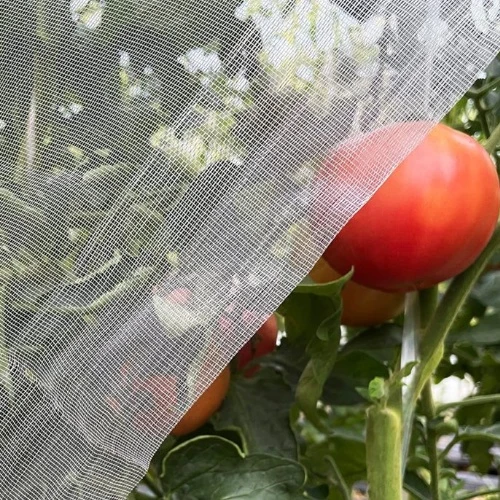 Anti-Insect Netting Range is high quality HDPE nets that provide optimum performance for protecting crops against pest and natural damage. By using Anti-Insect Netting, growers can apply an environmentally friendly approach to protect crop while reducing significantly the use of pesticides on products, thus benefit consumer health and natural environment.Read more
Anti-Insect Netting Range is high quality HDPE nets that provide optimum performance for protecting crops against pest and natural damage. By using Anti-Insect Netting, growers can apply an environmentally friendly approach to protect crop while reducing significantly the use of pesticides on products, thus benefit consumer health and natural environment.Read more -
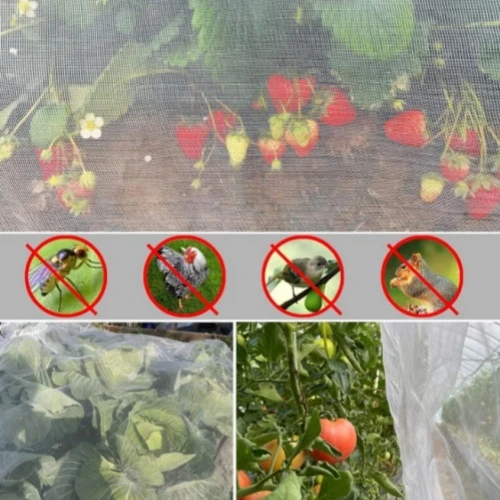 When trying to protect our gardens from pests, insects and other nuisance critters, it is important to choose the right type of netting.There are several types of netting that can be used to help protect against insects or birds. The best type of netting for a particular situation will depend on the specific needs and requirements of the user.In this post, we’ll look at the various types of insect netting and discuss which type is best suited for a given application. Let’s begin.Read more
When trying to protect our gardens from pests, insects and other nuisance critters, it is important to choose the right type of netting.There are several types of netting that can be used to help protect against insects or birds. The best type of netting for a particular situation will depend on the specific needs and requirements of the user.In this post, we’ll look at the various types of insect netting and discuss which type is best suited for a given application. Let’s begin.Read more -
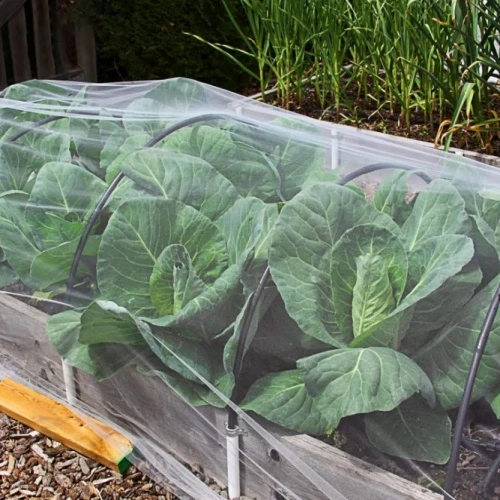 Anti insect netting is like window screen, with high tensile strength, anti-ultraviolet, heat, water, corrosion, aging and other properties, non-toxic and tasteless, the service life is generally 4-6 years, up to 10 years. It not only has the advantages of sunshade net, but also overcomes the shortcomings of sunshade net, which is worthy of vigorous promotion.Read more
Anti insect netting is like window screen, with high tensile strength, anti-ultraviolet, heat, water, corrosion, aging and other properties, non-toxic and tasteless, the service life is generally 4-6 years, up to 10 years. It not only has the advantages of sunshade net, but also overcomes the shortcomings of sunshade net, which is worthy of vigorous promotion.Read more -
 Insect netting is a protective barrier mesh usually made of woven poly. It is meant to exclude pests from valuable market crops, trees, and flowers. Pests can cause direct damage to the leaves and the fruits of crops, cause disease, and lead to lower yields.Insect netting is designed to keep out pests, while still allowing for proper airflow and water permeability through the small mesh openings. The netting provides protection from insects, deer and rodents, and damage from excessive weather like hail.The mesh size varies between brands and is typically chosen depending on the insect that you wish to exclude or what pests are common in your area. Mesh is measured by the number of holes in one linear inch of the netting.Read more
Insect netting is a protective barrier mesh usually made of woven poly. It is meant to exclude pests from valuable market crops, trees, and flowers. Pests can cause direct damage to the leaves and the fruits of crops, cause disease, and lead to lower yields.Insect netting is designed to keep out pests, while still allowing for proper airflow and water permeability through the small mesh openings. The netting provides protection from insects, deer and rodents, and damage from excessive weather like hail.The mesh size varies between brands and is typically chosen depending on the insect that you wish to exclude or what pests are common in your area. Mesh is measured by the number of holes in one linear inch of the netting.Read more -
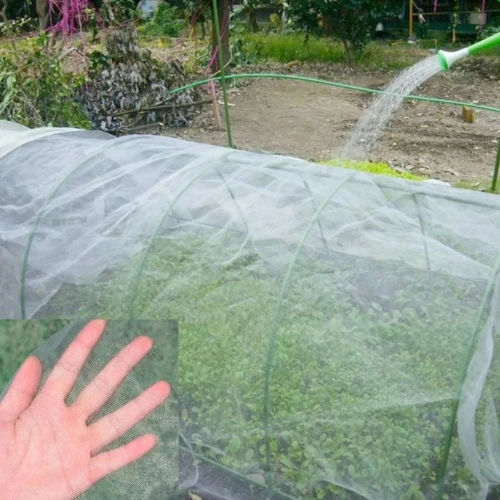 Insect nets act as a physical barrier, preventing insects and pests from accessing crops. They create a protective shield around plants, reducing the need for chemical pesticides. By excluding pests, insect nets help minimize crop damage and yield loss caused by insects such as aphids, caterpillars, beetles, and other harmful pests.Read more
Insect nets act as a physical barrier, preventing insects and pests from accessing crops. They create a protective shield around plants, reducing the need for chemical pesticides. By excluding pests, insect nets help minimize crop damage and yield loss caused by insects such as aphids, caterpillars, beetles, and other harmful pests.Read more -
 Insect nets have been used for organic crops for many years and are now more popular than ever. Our insect proof net not only provide a physical barrier to prevent insects from entering, but it also allows approximately 90% of natural light and rain and 75% of natural airflow to pass through, creating an ideal protected microclimate for crop growth. Anti insect net mesh will only increase the temperature by 2 to 30 degrees Celsius, but they provide significant protection from wind, rain and hail to the crops, thereby promoting growth. They can also protect other pests such as birds, rabbits and deer.Read more
Insect nets have been used for organic crops for many years and are now more popular than ever. Our insect proof net not only provide a physical barrier to prevent insects from entering, but it also allows approximately 90% of natural light and rain and 75% of natural airflow to pass through, creating an ideal protected microclimate for crop growth. Anti insect net mesh will only increase the temperature by 2 to 30 degrees Celsius, but they provide significant protection from wind, rain and hail to the crops, thereby promoting growth. They can also protect other pests such as birds, rabbits and deer.Read more -
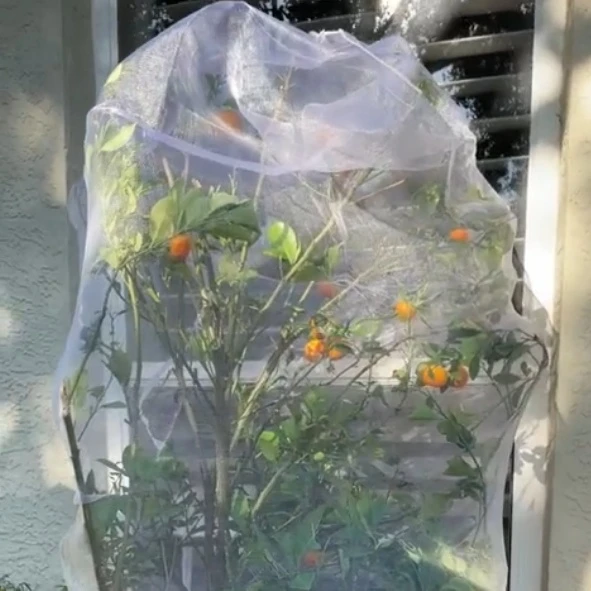 The field of agronomy requires hard work. Besides challenging jobs and physical labor, there is also the fight against pests.Fortunately, over the years, technology has advanced. And now there are various reliefs created by the man-kind. Luckily, they do not need physical effort. One of them is installing anti-insect netting.Read more
The field of agronomy requires hard work. Besides challenging jobs and physical labor, there is also the fight against pests.Fortunately, over the years, technology has advanced. And now there are various reliefs created by the man-kind. Luckily, they do not need physical effort. One of them is installing anti-insect netting.Read more
-
 Afrikaans
Afrikaans -
 Albanian
Albanian -
 Amharic
Amharic -
 Arabic
Arabic -
 Armenian
Armenian -
 Azerbaijani
Azerbaijani -
 Basque
Basque -
 Belarusian
Belarusian -
 Bengali
Bengali -
 Bosnian
Bosnian -
 Bulgarian
Bulgarian -
 Catalan
Catalan -
 Cebuano
Cebuano -
 China
China -
 Corsican
Corsican -
 Croatian
Croatian -
 Czech
Czech -
 Danish
Danish -
 Dutch
Dutch -
 English
English -
 Esperanto
Esperanto -
 Estonian
Estonian -
 Finnish
Finnish -
 French
French -
 Frisian
Frisian -
 Galician
Galician -
 Georgian
Georgian -
 German
German -
 Greek
Greek -
 Gujarati
Gujarati -
 Haitian Creole
Haitian Creole -
 hausa
hausa -
 hawaiian
hawaiian -
 Hebrew
Hebrew -
 Hindi
Hindi -
 Miao
Miao -
 Hungarian
Hungarian -
 Icelandic
Icelandic -
 igbo
igbo -
 Indonesian
Indonesian -
 irish
irish -
 Italian
Italian -
 Japanese
Japanese -
 Javanese
Javanese -
 Kannada
Kannada -
 kazakh
kazakh -
 Khmer
Khmer -
 Rwandese
Rwandese -
 Korean
Korean -
 Kurdish
Kurdish -
 Kyrgyz
Kyrgyz -
 Lao
Lao -
 Latin
Latin -
 Latvian
Latvian -
 Lithuanian
Lithuanian -
 Luxembourgish
Luxembourgish -
 Macedonian
Macedonian -
 Malgashi
Malgashi -
 Malay
Malay -
 Malayalam
Malayalam -
 Maltese
Maltese -
 Maori
Maori -
 Marathi
Marathi -
 Mongolian
Mongolian -
 Myanmar
Myanmar -
 Nepali
Nepali -
 Norwegian
Norwegian -
 Norwegian
Norwegian -
 Occitan
Occitan -
 Pashto
Pashto -
 Persian
Persian -
 Polish
Polish -
 Portuguese
Portuguese -
 Punjabi
Punjabi -
 Romanian
Romanian -
 Russian
Russian -
 Samoan
Samoan -
 Scottish Gaelic
Scottish Gaelic -
 Serbian
Serbian -
 Sesotho
Sesotho -
 Shona
Shona -
 Sindhi
Sindhi -
 Sinhala
Sinhala -
 Slovak
Slovak -
 Slovenian
Slovenian -
 Somali
Somali -
 Spanish
Spanish -
 Sundanese
Sundanese -
 Swahili
Swahili -
 Swedish
Swedish -
 Tagalog
Tagalog -
 Tajik
Tajik -
 Tamil
Tamil -
 Tatar
Tatar -
 Telugu
Telugu -
 Thai
Thai -
 Turkish
Turkish -
 Turkmen
Turkmen -
 Ukrainian
Ukrainian -
 Urdu
Urdu -
 Uighur
Uighur -
 Uzbek
Uzbek -
 Vietnamese
Vietnamese -
 Welsh
Welsh -
 Bantu
Bantu -
 Yiddish
Yiddish -
 Yoruba
Yoruba -
 Zulu
Zulu




